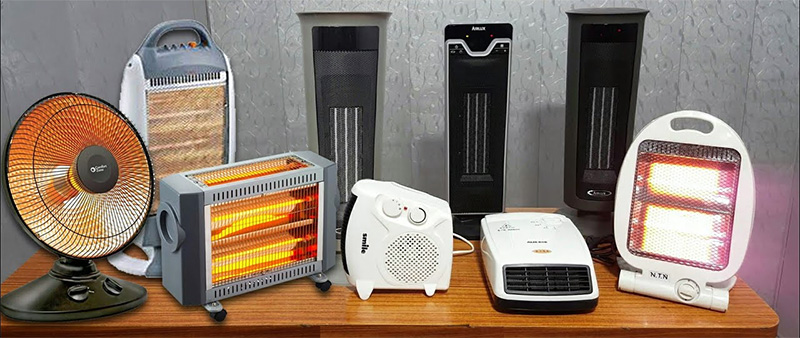How to save on heating costs in an apartment? Winter brings snow, cold weather, and greater heating expenditures. As a renter, you may believe there is little you can do to manage your shared complex’s winter heating expenditures. How much can you actually do to save money and cut your bills if you don’t own your home? As it turns out, quite a bit.
How to save on heating costs in an apartment?
Winters are not only gloomy and chilly, but they also drain your bank account. Because of the high expenditures of heating an apartment, cold winter winds bring large energy bills. Do space heaters save money apartments?

This raises an important question: is it possible to save money on heating costs?
18 Easy Ways to Save On Heating Costs in an Apartment
There are, in fact, numerous strategies to reduce your energy bill. In this article, I will discuss several simple techniques to reduce your apartment’s heating costs. With these expert-approved solutions, you may cut expenditures and save money on your apartment heating bills.
1. Add Reflectors
Radiators radiate heat in all directions, including the wall directly behind them. Heat directed there does nothing for your apartment. Fortunately, radiator reflectors come in handy here. These heat-resistant sheets slide behind radiators and nearby walls, diverting warmth back into the space rather than absorbing it. Find heat-resistant reflecting sheets online or in your local hardware store, where they cost between $25 and $50.
Please keep in mind that reflectors only operate when placed between a radiator and an exterior wall. Interior walls, such as those separating rooms in your flat, will not contribute as much to total heat loss.
2. Buy a Humidifier
Using humidifiers in the wintertime does more than only prevent dry skin and chapped lips. Humidity acts as a heat amplifier as well.
Humid air captures and retains heat more effectively than dry air. Including a humidifier in your bedroom and living area will assist regulate warmer temperatures while also providing other benefits such as less dry skin. The Department of Energy recommends testing the relative humidity levels in your apartment. The ideal relative humidity values for your home should be between 20 and 40%. When the moisture levels in your home are acceptable, you can lower your thermostat a few degrees without feeling a significant difference.
3. Clear The Way to save on heating costs in an apartment
Today, the most typical apartment heating methods, or registers, are radiators and duct-connected vents. Examine your apartment for heat registers. Are radiators obstructed by couches, chairs, bed frames, tables, or other furniture, preventing warm air from circulating uniformly throughout the room? Similarly, are heat vents clear and unobstructed, allowing optimal airflow?
Vents near floor frames or above floor crown moulding are especially troublesome. Apartment furniture can easily block off floor-side air vents without your knowledge. This winter, channel your inner HGTV interior designer by rearranging apartment objects to create clear heat resister channels.
4. Control Those Curtains to save on heating costs in an apartment
In a few ways, the curtains on your windows can help adjust the temperature in your home. Here’s how to use curtains to cut your winter heating expenditures.
- Allow sunlight to enter your flat by leaving the curtains open during the day. Windows towards the east, south, and west should be kept open during the day to capture the most natural heat and light.
- Keep your windows and walls up-to-date and fixed.
- Draw your curtains or shades around sundown to trap in the heat that has gathered throughout the day.
When you buy quilted curtains for your apartment, you’ll get extra points. Quilted drapes’ thicker materials are ideal for trapping extra heat at night.
5. Consider A Programmable or Smart Thermostat
Examine your lease, then inquire with your landlord about installing a programmable or “smart” thermostat in your home. Programmable thermostats change heat levels automatically throughout the day based on the criteria you choose.
You can configure a programmable thermostat to lower the temperature while you sleep, raise it about an hour before you get up, lower it again before you leave for work, and warm up again when you return home. Smart thermostats learn your patterns and begin to programme themselves. A pre-programmed heat moderator like this can save you 3-10% on your heating expenditures for every degree you lower over the course of 24 hours. This equates to a $100-150 save per year.
6. Weatherstrip Windows And Doors
The average home loses between 25 and 30 percent of its overall heat usage. Who is the main offender? Windows that are old, unsealed, or inadequately locked
Weatherstrips around windows, external doors, and even attic hatchways help to seal those heat-leaking panes. Use adhesive-backed weatherstrips for easy installation, and be sure to clean all surfaces before applying the strips.
7. Review Storm Windows
Storm windows are significantly more energy-efficient than single-paned windows. All storm windows have a double glass pane, one tucked into the interior of your home including one facing outdoors.
The double-pane glass helps to keep out cold winter air, keeping your home warm and inviting. But not all storm windows are created equal. Examine its condition and weather ability, giving careful attention to the locks. The panes should also be airtight when closed.
If your flat doesn’t have double-paned storm windows, consider constructing your own by wrapping plastic wrap around your windows.
8. Shut Your Doors to save on heating costs in an apartment
Leaving doors open during the day may not appear to be a waste of energy. However, locking the doors to separate rooms helps to keep heat inside. It’s a simple and straightforward method, especially in larger buildings with many bedrooms.
Apply the same rationale to rooms that aren’t commonly used. Consider gradually lowering the thermostat throughout your flat, utilising closed doors to block and trap in the existing warm air as temps fall.
9. Close Fireplace Dampers & Flues
Is there a wood-burning fireplace in your apartment? If this is the case, make sure to close the damper whenever the fireplace is not in use. Just remember to reopen it before lighting your next fire.
Chimney dampers are normally found near the smoke-collecting deck, in the middle of your chimney chute. A tiny latch situated around the mantle of a wood-burning fireplace closes and opens the damper flap. Leaving the damper open 24 hours a day, 365 days a year is equivalent to leaving your apartment windows open all year. Warm air will constantly exit through the chute, allowing cool air to infiltrate.
Check your dryer vents using the same rationale. Dryer vents should also be blocked when not in use to keep heating bills as low as possible.
10. Keep Heat Running
Continually turning off and restarting your heating system is really more expensive than simply regulating the temperature in your home. While turning off the heat appears to be the most direct (and even logical) approach to save money on your bills, you wind up spending more in the process of rebooting.
As a general guideline, avoid regularly turning off your heat. If you’re going to be gone for an extended amount of time, turn the thermostat down but not completely off to prevent pipes from freezing.
11. Double Check Window Locks
Windows should be securely and smoothly locked. Those that jam or become trapped when you try to secure them are most likely allowing warm indoor air to escape from your home. Faulty locks also allow the dry, chilly winter air to enter.
Whereas if windows in your home do not lock properly, contact management. Jammed locks & windows that are difficult to pull down or do not appear to fit properly in the frame are two issues worth discussing with your landlord. Again, unsealed window edges are the leading cause of heat loss in the winter, sucking up to 20% of your warm air.
12. Always Wear Socks
Sorry, barefoot fans. Winter is not the time to strut about the house like it’s a day at the beach. In fact, the feet are particularly sensitive to temperature changes in the body. Cold feet make it difficult to feel warm in other parts of the body. As a result, even if your thermostat is set to a suitable temperature, you will feel chilled in your flat. Make it a house rule that everyone must wear socks, pants, and long sleeves before turning on the heat. Even so, you can always add another layer or a blanket.
13. Play Equipment Detective Outside
Your apartment’s external heating unit must be in good working order in order to produce and maintain adequate heat levels throughout the building. Take a few moments to thoroughly inspect that unit. Make sure that any neighbouring brush is well-trimmed and that any material impediments are eliminated.
Overgrown plants, snow accumulation, or general debris might clog the unit and prevent it from functioning properly. If possible, go the extra mile by evaluating the condition of heat pumps woven throughout accessible housing spaces, such as the basement of your building. Simply be prudent. Don’t spook your neighbours.
14. Place a Strategic Fan
In the summer, stand-alone and ceiling fans are most popular since they serve to produce a cooling effect by moving air around a room. Many ceiling fans have a reverse function that causes the blades to revolve clockwise. The reversed motion drags cold air higher while pushing naturally rising hot air downward, making your home feel warmer.
Similar items are available to assist remove even more chilly air from a room. Air-vent boosters, for example, can be put over individual vent holes to create cold-air-targeting updrafts. Installing these devices will help you save even more money on your heating expenses because you won’t have to set your thermostat as high.
15. Spruce Up to save on heating costs in an apartment
Forget about spring cleaning: the cooler months leading up to winter are ideal for giving your apartment’s HVAC components some TLC. Dust radiators and vent openings, particularly those near the floor baseboards. Clean the window panes before closing and locking them. These little steps not only preserve heat components in good working order but also enhance apartment air quality, making your house healthier.
16. Turn Down the Thermostat
Turning down the thermostat is an easy way to save money on heating in an apartment. Don’t worry, we’re not telling you to live in subzero temps. When sleeping or at work, although, it is always a good idea to lower the thermostat by a few degrees.
Keep in mind that lowering the thermostat by more than 10 degrees for only a few hours can have a negative effect. Turning down the thermostat will have no effect because your heating unit will waste too much energy to heat the apartment back up. For optimal energy savings, the Department of Energy recommends setting the thermostat to 68 degrees.
17. Use Rugs or Carpet to save on heating costs in an apartment
To warm-up, a cold floor may absorb a lot of heat. A better option is to cover the floor with a carpet or rug. Although it may appear simple, covering the floor can have a significant impact on overall heating costs. Furthermore, while you move around the apartment, it will keep your feet warm, toasty, and comfy.
The rug will provide an additional layer of insulation. By adding a rug pad beneath your rug or carpet, you may take further insulation to the next level. Use this trick to bring a cosy touch to even the coldest rooms of the house, such as the kitchen, ground-level spaces, and the bathroom.
18. Plug Up Drafty Holes or Cracks
So you’ve shut the doors and windows, but you still sense a chilly draught in the house? Well, there could be some draughty gaps or cracks allowing hot air to escape the house. Wet your hands with water and wander carefully around the apartment to find draughty holes and cracks.
Cold draughts can enter your home from the most unexpected areas, such as sink plumbing, non-working fireplaces, electrical plugs, and so on. To properly cover such spaces, it is best to utilise expanding spray foam. Your landlord would appreciate it, and you will have successfully kept bugs and rodents out of your unit.
Reduce Your Gas Bills and Save Money
You take pride in your financial management and the peace of mind it provides. Keeping your winter heating bills low can feel like a badge of honour, allowing you to spend your money where and how you choose.
Conclusion
There are various strategies that households can use to cut winter heating bills. However, pricey renovations such as attic insulation or installing energy-efficient windows are not necessarily the most cost-effective solutions, particularly for renters. The good news is that by following the aforementioned tips, you may accomplish the same benefits while saving a significant amount of money. Those minor tricks and tips can help you save a lot of money!



